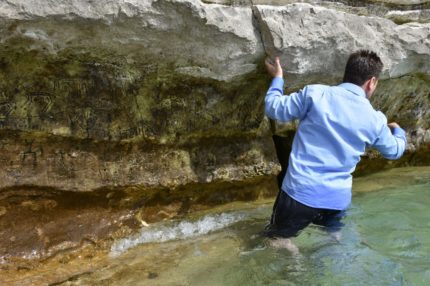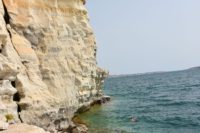 Fishermen have discovered ancient rock art on the shore of the Atatürk reservoir near Adıyaman, southeastern Turkey. Water levels in the reservoir have dropped around 10-15 meters (32-49 feet), exposing the low part of a cliff face that has been underwater since at least 1990 when the dam was completed.
Fishermen have discovered ancient rock art on the shore of the Atatürk reservoir near Adıyaman, southeastern Turkey. Water levels in the reservoir have dropped around 10-15 meters (32-49 feet), exposing the low part of a cliff face that has been underwater since at least 1990 when the dam was completed.
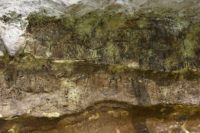 The art spotted is an expansive tableau of carved drawings more than eight meters (26 feet) long and two feet wide. The carvings, created using an etching method, include human and animal figures underscored by linear motifs believed to represent a settlement on a slope. Animals depicted include mountain goats, horses, wolves, foxes, storks and a variety of indeterminate shapes. There are at least two hunting scenes, one including images of people armed with bows and arrows hunting wild goats and another with men on horses chasing a chevrotain, an extremely cute striped ungulate more commonly known as mouse-deer.
The art spotted is an expansive tableau of carved drawings more than eight meters (26 feet) long and two feet wide. The carvings, created using an etching method, include human and animal figures underscored by linear motifs believed to represent a settlement on a slope. Animals depicted include mountain goats, horses, wolves, foxes, storks and a variety of indeterminate shapes. There are at least two hunting scenes, one including images of people armed with bows and arrows hunting wild goats and another with men on horses chasing a chevrotain, an extremely cute striped ungulate more commonly known as mouse-deer.
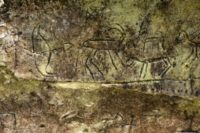 The size of the tableau and the richness of the animal and human life depicted are of particular interest to scientists. The carvings are in excellent condition, undiminished by so many years covered by water, which gives researchers the opportunity to learn more about prehistoric life in the area. The location is also significant and it is likely to have held religious meaning to the carvers.
The size of the tableau and the richness of the animal and human life depicted are of particular interest to scientists. The carvings are in excellent condition, undiminished by so many years covered by water, which gives researchers the opportunity to learn more about prehistoric life in the area. The location is also significant and it is likely to have held religious meaning to the carvers.
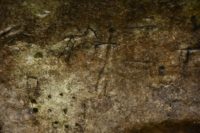 The rock art dates at least to the Paleolithic era, but may be even older. Experts believe they may have been carved as far back as 2.6 million years ago. The carvings will be studied further as long as they are exposed. They will remain in situ even when the water returns to its previous level and covers it. The water didn’t damage it before, indeed, it helped preserve it.
The rock art dates at least to the Paleolithic era, but may be even older. Experts believe they may have been carved as far back as 2.6 million years ago. The carvings will be studied further as long as they are exposed. They will remain in situ even when the water returns to its previous level and covers it. The water didn’t damage it before, indeed, it helped preserve it.
